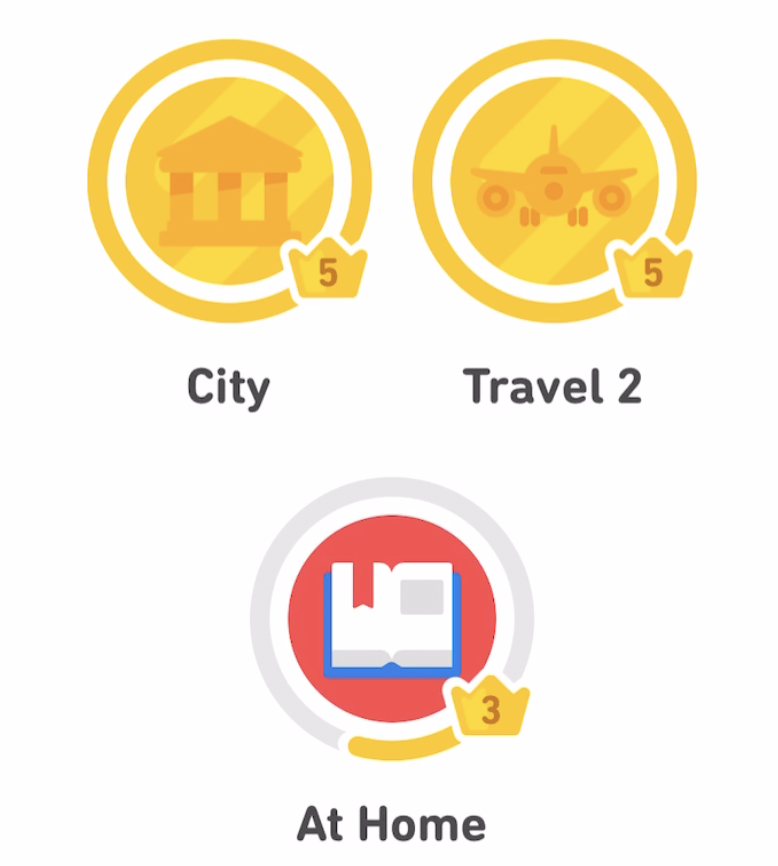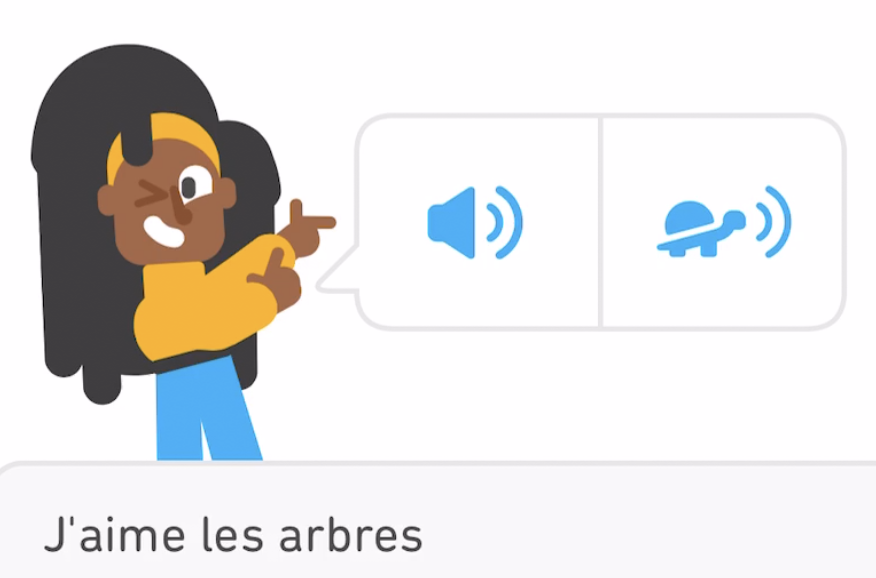 This is #NotAnAd - Duolingo is my favorite app of the year.
This is #NotAnAd - Duolingo is my favorite app of the year.
Duolingo is an app for learning a new language at your own pace and in your own time.
I recently achieved a 100 day streak on Duolingo, part of the way to my New Year’s resolution to do 365 days of French this year. I’m un peu fier (a little bit proud) of myself, but I’m also a little bit in awe of quite how polished, delightful and rewarding an experience Duolingo-the-team has produced. If you haven’t tried it, even if you don’t think you’re interested in learning a new language, you should, just to see how well put together it is.
Duolingo has a playful and intuitive interface that works across mobile and desktop and makes language learning feel like a fun game. The learning experience itself is impressive - combining implicit instruction (learning by example - e.g. throwing new words into the mix from time to time so you figure them out by context) with explanations (pedagogical cards that explain how to use a word / grammar construct) and mastery learning (you have to reach a certain level in a skill/area to unlock more levels or topics).
On top of that, the whole thing is gamified to next Sunday. There are delightful little dopamine hits every time you get a question right (“da ding!”), an in-game currency that you earn as you learn, badges and achievements and a leaderboard + community. They’ve even figured out how to make you feel better when you get a string of questions wrong “you’ve got to make mistakes to learn!” provided by a cute little owl (who can dress up in outfits you buy in the virtual store… it sounds ridiculous but it’s strangely enticing). Above all, they’ve figured out how to string all this together at just the right time to keep stretching or rewarding you just when you were about to give up. Here are just a few of the things I’ve appreciated in the experience.
Superlative onboarding
 When you start using Duolingo, you answer a couple of quick questions (which language, why are you learning?) and drop straight into the regular lesson experience. There’s no blocking “create an account” flow and certainly no need to verify your email address. This first lesson helps figure out what level you are already competent at in the new language. Once you’ve completed it you’ll want to create an account in order to capture your hard work and save your progress.
When you start using Duolingo, you answer a couple of quick questions (which language, why are you learning?) and drop straight into the regular lesson experience. There’s no blocking “create an account” flow and certainly no need to verify your email address. This first lesson helps figure out what level you are already competent at in the new language. Once you’ve completed it you’ll want to create an account in order to capture your hard work and save your progress.
From the first moment, the polish of the overall experience is apparent. Words are read out as you tap them and animate smoothly into place. There are little vignettes of motion and playfulness that make you want to see more and the question types are super-varied - there are several ways the app teaches you to read, write, listen and speak so it never feels repetitive.
Dopamine hits
The gamification in Duolingo exists at every possible zoom level. Within each lesson, every time you get a question right there’s an addictive little chime - this is particularly appealing to my daughter when she decides to do the lessons with me. The character who asked you the question will do a little happy dance and you’ll see your progress through the lesson advance. You answer any questions you got wrong again at the end of the lesson until you’ve learned how to answer correctly. When you complete a lesson there’s a more grandiose chime, an award of gems for meeting your daily goal (or “lingots” on desktop, I have no idea why they are different, this is my only major dissatisfaction - it’s bonkers)! If it’s your first lesson of the day you get an affirmation that you’ve kept your streak alive. The desire to maintain my streak and keep the (beautifully animated!) flame burning by taking a lesson every single day has pulled me back into the app very successfully. Across lessons, you’re seeking to level up and earn “crowns” by mastering each skill.

My first instinct was that this was too much - mixing too many different reward systems. But over the past 100 days I’ve come to appreciate each of them and make an effort to find time for short sessions every day (to keep the streak alive) and longer ones at least once a week (to gain XP and move up the leaderboard) , which seems valuable in improving my French.
Polished motion design
I don’t know of another app that uses motion in the UI more effectively than this one. There’s some carefully designed motion in virtually every interaction. Word chips animate perfectly into place as you compose a sentence. The owl’s eyes blink. The pages of a book glyph turn and a little bookmark slides over an open leaf. The cute owl slides in when you pull from the top of the main screen. Perhaps the best motion touches are the characters who ask many of the questions and celebrate your correct answers with applause, a happy dance or this cheeky wink and finger guns.

Science based
Duolingo’s pedagogy is well thought through and science based. They have published a bunch of papers and make various datasets available for others to benefit from. Today the app uses a variety of techniques to try to maximize learning rate, including spaced repetition. Particularly when I use practice mode and take the progress tests, it really feels like Duolingo is stretching my understanding of the language and concepts.
The loading screens in the app are nicely animated and always share a little Duolingo promo or a tidbit about the language. From time to time Duolingo tells me “On average, it takes 34 hours of Duolingo to learn the equivalent of one semester of college.” and I believe it.
In summary - there’s a whole ton other apps could learn from the Duolingo experience - value from the first minute, attention to detail that delights on day 1 and on day 100, and a real depth of thought for what makes their users tick.